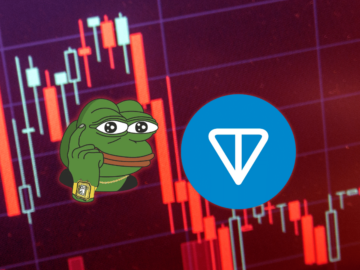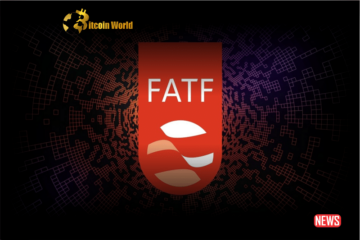
The Bitcoin halving stands out as a critical milestone in the constantly changing world of cryptocurrencies. This phenomenon is fundamental to the protocol and has a significant impact on how the world’s most popular digital currency develops. We go into the history, mechanics, and significant effects of the Bitcoin halving on miners, investors, and the network in this in-depth investigation.
UNDERSTANDING BITCOIN HALVING
The heart of Bitcoin’s design incorporates the concept of halving, an event that occurs approximately every four years, requiring a 50% reduction in the block reward for miners. Bitcoin’s DNA codes this protocol-driven reduction, ensuring a controlled and finite supply of cryptocurrency, with the total capped at 21 million bitcoins, creating scarcity reminiscent of precious metals like gold.
HOW BITCOIN HALVING WORKS
Embedded in the blockchain protocol from its genesis block, Bitcoin halving is a recurring event executed through just two lines of code. The most recent halving in May 2020 marked a reduction in the block reward from 12.5 BTC to 6.25 BTC. The next anticipated halving is slated for April 2024. This deliberate reward reduction is a mechanism to control inflation, preventing arbitrary issuance and aligning Bitcoin more with scarce commodities than traditional fiat currencies.
BITCOIN HALVING AND HISTORICAL PRICE DEVELOPMENT
Examining the historical context reveals the correlation between Bitcoin halving events and market prices. The 2012 halving witnessed a remarkable 8,069% surge in Bitcoin’s price within a year, and the 2016 halving saw a 284% increase. While a price surge is often expected due to reduced supply, external factors like global events and public sentiment also play significant roles in shaping Bitcoin’s market dynamics.
IMPACT ON MINERS
Post-halving, miners face a reduced block reward, potentially impacting their profitability. The upcoming halving in April 2024 will further halve the block reward to 3.125 BTC. This reduction may lead some miners to reevaluate the affordability of their operations, potentially decentralizing the market as smaller players enter. The fundamental purpose, however, is to control Bitcoin’s inflation rate and maintain a steady supply over time.
WHAT HAPPENS WHEN ALL BITCOINS ARE MINED?
With a projected completion of all 21 million bitcoins by 2140, miners will no longer receive rewards for solving transactions. Instead, they will rely on transaction fees. This shift marks a transition from mining-driven rewards to a fee-based compensation model, challenging the network to sustain itself based on user transactions.
HASHRATE, NETWORK SECURITY, AND DECENTRALIZATION
Hashrate, a measure of mining computational power, plays a pivotal role in ensuring network security. The halving’s potential impact on hashrate involves a delicate balance – a reduction in miners may decrease hashrate, but if it boosts Bitcoin’s price due to reduced supply, the value of the smaller mining reward could increase. Striking this balance is essential for maintaining both security and decentralization within the Bitcoin network.
HALVING HISTORY
Reflecting on Bitcoin’s journey, from its genesis block in 2009 to becoming a legal tender in El Salvador in 2021, the historical significance of each halving event becomes apparent. From the first halving in 2012 to the most recent in 2020, each phase has witnessed its unique challenges and triumphs, contributing to Bitcoin’s maturation as a global financial asset.
LONG-TERM IMPACT ON BITCOIN
Many in the crypto community anticipate a bull run following each halving, fueled by historical patterns of increased demand and reduced supply. However, it is crucial to acknowledge that past performance is not a guaranteed indicator of future value. The unique interplay between Bitcoin’s predictable supply reduction and evolving market dynamics presents both opportunities and challenges for investors and the broader cryptocurrency ecosystem.
CONCLUSION
As we navigate the complexities of Bitcoin halving, it becomes evident that this recurring event is more than just a decrease in block rewards; rather, it is a fundamental mechanism that shapes the core of the cryptocurrency. The halving impacts market pricing and inflation control, among other things, in the cryptocurrency space. The cryptocurrency community excitedly anticipates the next exciting development in the amazing journey of Bitcoin as we approach its next halving in April 2024.
- SEO Powered Content & PR Distribution. Get Amplified Today.
- PlatoData.Network Vertical Generative Ai. Empower Yourself. Access Here.
- PlatoAiStream. Web3 Intelligence. Knowledge Amplified. Access Here.
- PlatoESG. Carbon, CleanTech, Energy, Environment, Solar, Waste Management. Access Here.
- PlatoHealth. Biotech and Clinical Trials Intelligence. Access Here.
- Source: https://bitcoinworld.co.in/unlocking-the-mysteries-of-bitcoin-halving/
- 10
- 11
- 12
- 125
- 2012
- 2016
- 2020
- 2021
- 2023
- 2024
- 25
- 8
- 9
- a
- aligning
- All
- also
- amazing
- among
- an
- analysis
- and
- anticipate
- anticipated
- anticipates
- apparent
- approach
- approximately
- April
- ARE
- as
- asset
- At
- balance
- based
- becomes
- becoming
- between
- beyond
- Bitcoin
- BitcoinWorld
- block
- boosts
- both
- broader
- BTC
- bull
- Bull Run
- but
- by
- category
- challenges
- challenging
- changing
- CO
- code
- Codes
- Commodities
- community
- Compensation
- completion
- complexities
- comprehensive
- computational
- concept
- constantly
- context
- contributing
- Control
- control inflation
- controlled
- Core
- could
- Creating
- critical
- crucial
- crypto
- crypto community
- cryptocurrencies
- cryptocurrency
- cryptocurrency ecosystem
- currencies
- Currency
- Decentralization
- decrease
- Demand
- Design
- Development
- develops
- digital
- digital currency
- dna
- due
- dynamics
- each
- ecosystem
- effects
- el
- El Salvador
- embarks
- ensuring
- Enter
- essential
- Event
- events
- Every
- evident
- evolution
- evolving
- Exciting
- executed
- expected
- External
- Face
- Factors
- far
- Fees
- Fiat
- financial
- First
- Following
- For
- For Investors
- four
- from
- fueled
- fundamental
- further
- future
- Genesis
- Global
- global financial
- go
- Gold
- guaranteed
- Halving
- happens
- has
- hashrate
- heart
- Historical
- history
- How
- however
- HTML
- HTTPS
- if
- Impact
- impacting
- Impacts
- in
- incorporates
- Increase
- increased
- indicator
- inflation
- instead
- Interplay
- into
- investigation
- Investors
- involves
- Is
- issuance
- IT
- ITS
- itself
- journey
- jpg
- just
- lead
- Legal
- like
- lines
- longer
- Look
- maintain
- maintaining
- marked
- Market
- marks
- May
- measure
- Mechanics
- mechanism
- metals
- milestone
- million
- Miners
- Mining
- model
- more
- most
- Most Popular
- mysteries
- navigate
- network
- network security
- Next
- NFTs
- no
- not
- of
- often
- on
- Operations
- opportunities
- Other
- out
- over
- Past
- patterns
- performance
- phase
- phenomenon
- pivotal
- plato
- plato data intelligence
- platodata
- platogaming
- play
- players
- plays
- Popular
- potential
- potentially
- power
- precious
- Precious Metals
- predictable
- presents
- preventing
- price
- prices
- pricing
- profitability
- projected
- Protocol
- public
- purpose
- rate
- rather
- receive
- recent
- Reduced
- reduction
- rely
- remarkable
- reminiscent
- reveals
- reward
- Rewards
- role
- roles
- Run
- salvador
- saw
- security
- sentiment
- shapes
- shaping
- shift
- significance
- significant
- smaller
- Social
- Social Impact
- Solving
- some
- Space
- Spain
- stands
- steady
- supply
- surge
- tag
- tender
- than
- that
- The
- The Future
- their
- they
- things
- this
- Through
- time
- to
- total
- traditional
- transaction
- transaction fees
- Transactions
- transition
- triumphs
- tutorial
- two
- unique
- Unlocking
- upcoming
- User
- value
- we
- when
- while
- will
- with
- within
- witnessed
- world
- Worlds
- year
- years
- zephyrnet











